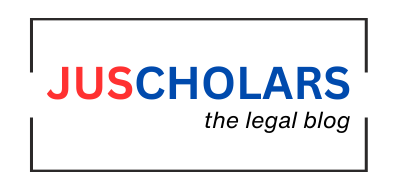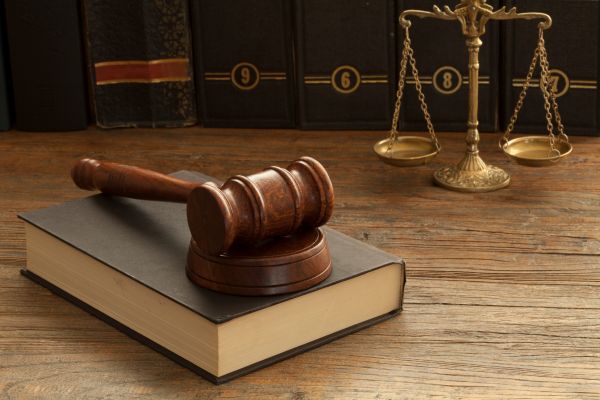Copyright is a legal term under intellectual property law that gives creators a right to protect their original works. This exclusive right allows them to monitor their work and track its use, this way it protects unauthorized duplication of creator’s work. Books, plays, music, paintings, sculpture, software, photographs and other original and tangible medium of expressions are covered under copyright.[1] Copyright only covers an original work and not an idea or a procedure. Additionally, the work should be such so that it can be perceived, reproduced, or communicated. Copyright law aims to reward creators for their efforts and investments and encourages creativity and innovation. This legal framework is essential in promoting progress in culture and advancement in science and useful arts.[2]
However, the rapid evolution of digital technology presents complex difficulties for the creators seeking to protect their original works. Technology has made it easier than ever to enjoy music, films or TV shows but it also leads to digital piracy due to the widespread distribution of copyrighted materials without permission.[3] There are various forms of digital piracy, which includes torrent sites, peer to peer (P2P) and cyber-lockers. The Indian legal scenario around digital piracy includes is dealt by Section 65A of The Copyright Act, 1957: It states that “any person who circumvents an effective technological measure applied to protect any of the rights conferred by this Act, to infringe such rights, shall be punishable with imprisonment which may extend to two years and shall also be liable to fine.”[4]
Evolution of copyright law in India
The evolution of copyright law in India can be traced back to the colonial period when the Indian Copyright Act of 1847 came into effect. This legislation was an imitation of England’s Copyright Act of 1842, which aimed to protect the rights of British authors within India. According to the Indian Copyright Act of 1847, the copyright protection extended for either lifetime of author plus additional 7 years or 42 years. After India got its independence a new law, the Copyright Act of 1957 was passed by by the Indian Parliament which came into effect on January 21, 1958. This law was passed in order to replace the colonial laws and it became the first law pertaining to copyright in independent India.[5]
The Copyright Act of 1957 was amended in the years 1983, 1984, 1992, 1994, 1999 and 2012. Each amendment was made with an aim to introduce new rights to protect the works of the creators. Among these, the Copyright (Amendment) Act of 2012 stands out as a landmark update, significantly enhancing copyright protection in the digital age.[6] This amendment included provisions to comply with the Internet Treaties, WIPO Copyright Treaty (WCT) and WIPO Performance and Phonograms Treaty (WPPT).[7] In 2021, the Tribunal Reforms Act, 2021 dissolved the Intellectual Property Appellate Board (IPAB and their responsibilities were transferred to Commercial Courts and High Courts. This was done with the aim to improve the process to resolve copyright disputes.[8]
India has ratified Berne Convention for the Protection of Literary and Artistic Works, which means India has to comply with it to protect original works produced by from other signatory countries. The evolution of copyright law in India reflects a commitment to protecting the rights of creators while promoting innovation and creativity in a rapidly changing technological landscape.[9] The ongoing challenge is to ensure that copyright law keeps pace with emerging technologies such as artificial intelligence and digital media, which continue to reshape the creative industries.
Impact of digital technology on copyright
The digital revolution has changed access to information, content creation and distribution, which has made it easier for creators to produce and showcase their works. Digital system has enabled users to create and reach global audience in less time and at a higher speed. As a result of this reproduction of the work and infringement has become more frequent, which is difficult to monitor or control. Digital platforms like YouTube and Instagram have promoted innovation and creativity, yet they have also raised issues concerning copyright.[10]
Advancements in digital technology have led to a major challenge of increase in digital piracy. The internet allows us to download and share copyrighted materials, without legitimately purchasing it from the creator. The unauthorised distribution affects artists and industries dependent on copyright protection and has an adverse impact on sectors such as music, film, and publishing. The piracy of such content dilutes the value of original works and creates a social acceptance of unauthorized copying. It is difficult to combat digital piracy due to infringements occurring in huge numbers and anonymity of the offenders.[11] Therefore, copyright law must constantly evolve with specific provisions to include emerging technologies and its application to protect the interests of original creators.
Challenges in enforcing copyright laws
Jurisdictional Issues: The first difficult factor to deal with in cases of copyright infringement is jurisdiction. Infringing content may well be housed on servers in one country and accessed by users all around the world because of its global reach. The outcome is a complex legal fight with too many jurisdictions, each one having its own set of copyright laws and enforcement mechanisms. The great diversity of legal systems makes the propagation of a unified concept on copyright protection and enforcement very hard, which very often leads to protracted legal battles with inconsistent results.[12]
Anonymity: In this context, anonymity offered by the internet has further complicated identification and prosecution of infringers. Users can easily hide behind their identities, and therefore, when a copyright holder finds out that a given person has violated his or her rights, it becomes very hard to pursue legal action against such.[13]
Difficulty in monitoring infringements: With the vast content that goes up on the internet daily, monitoring and tracking copyright infringements become a headache. The automated systems of detection of unauthorized use are mostly incapable of keeping pace with the data volume, hence missing out on many violations.[14]
Technological Challenges: Another major challenge in the enforcement of copyright is the technological advancement at a runaway speed. Encryption and sophisticated digital copying tools can quite easily bypass copyright protections. In fact, such technologies enabled many ways through which users distribute copyrighted materials undetected, complicating the efforts of copyright holders seeking to protect their intellectual property. The result is a game of cat and mouse whereby infringers get through with their infringement by continued finding of ways to circumvent protections, leaving the rights holders struggling to catch up and effectively enforce their rights.
Strategies for effective copyright enforcement
Copyright enforcement is a very vital means of ensuring that the interest of the creators is properly safeguarded, as well as ensuring that they get proper compensation for their works. The digital age, in which everything could easily be copied and uploaded online, has made copyright holders’ tasks of protecting their intellectual property rather challenging. However, there are some strategies that can be put in place in order to enforce copyright effectively:
Education and Awareness: The most effective way to prevent copyright infringement is through public awareness of the law, its infringement, and the after-effects, and awareness about respecting intellectual property rights among creators, businesses, and the general public.[15] This would be attainable through training sessions, seminars, and public awareness campaigns.
Proactive Monitoring and Detection: In addition to the things listed above, one of the essential steps for policing the copyright infringement is monitoring. Artisans and entrepreneurs are motivated to search for and report cases where individuals misuse their original materials online without their consents. This technique can be supported by several instruments including facial detection software, music recognition applications, and website monitoring services. One way to accomplish this is through water-marking and digital fingerprinting methods, which will track and monitor the use of the content.[16]
Licensing and Permissions: Since it involves the use of copyrighted material, proper licensing and permissions should be sought to prevent infringement. The creator needs to clearly lay down the process of licensing and be certain that the proper permissions exist at all stages in the creation and dissemination process.[17] Contracts should spell out terms of use, performance rights, and limitations on modifications or adaptations.
Digital Rights Management: Development of strong digital rights management systems will help in preventing unauthorized access, sharing, and distribution of copyrighted works. DRM assists the creator or business in controlling digital content’s access to the number of devices it has been set to view or play on; moreover, giving it encryption to avoid copying by unauthorized parties.[18]
Swift Legal Action: One has to act swiftly whenever one finds infringements against their works under copyright. This could be done through sending cease and desist letters, filing for injunctive relief, and even demanding damages in court.[19] Thus, timely legal intervention can prevent further unauthorized use and set a strong message among other possible infringers.
Collaboration with Enforcement Agencies: It can significantly improve the ability to detect and deal with infringement by collaborating with copyright enforcement agencies. Such organizations specialize in monitoring and institution of legal action against copyright violations.[20] Engaging with them can bring further resources and expertise into the mix when searching for and acting on infringing use.
By implementing a combination of these strategies, copyright holders can effectively enforce their rights and protect their intellectual property in the digital age. Proactive measures, clear licensing agreements, and swift legal action can help deter infringement and ensure that creators are fairly compensated for their work.
Case studies
Katy Perry v. Marcus Gray (2019)
In this case, Marcus Gray accused Katy Perry of copying his song “Joyful Noise” in “Dark Horse.” Initially, the court awarded Gray $2.78 million, but the decision was later overturned on appeal due to a lack of substantial similarity evidence. This case underscored challenges in proving music copyright infringement, especially with common musical elements.[21]
Whitmill v. Warner Brothers (2011)
In this case, Tattoo artist S. Victor Whitmill sued Warner Brothers for using his tattoo design in “The Hangover Part II” without consent. Although his request to stop the film’s release was denied, his copyright claim was acknowledged, leading to a private settlement. This case highlighted copyright protection for visual art and complexities in fair use for media.[22]
Dainik Jagran v. Telegram (2023)
Indian newspaper Dainik Jagran sued Telegram for copyright infringement, alleging unauthorized PDF sharing of its content in Telegram groups. The court ruled in favour of Dainik Jagran, issuing an injunction against Telegram and requiring disclosure of the infringers’ identities. This case reinforced digital platforms’ duty to control copyrighted content, protecting creators’ rights in the digital space.[23]
Conclusion
Though it is true that digital times have changed the scene of content creation, distribution, and consumption with unimaginable challenges over copyright enforcement, it needs no mentioning that very evolution in copyright law—historical and modern amendments—clearly depicts the never-ending efforts to pace up with the speeding technological development. In such a scenario, when the digital content is increasing manifolds, so are increasing the instances of infringement that are posing serious threats to the creators’ rights and the integrity of intellectual property.
Jurisdictional complexities, the anonymity provided by the internet, and technological barriers pose immovable problems in the enforcement of copyright laws. Case studies of some prominent copyright infringement cases reflect their diversified outcome and the challenges legal systems around the world are facing while handling such issues. Moreover, although some of the technological fixes developed to this day, like Digital Rights Management, do seem to offer some prospects for protection against copyright infringement, they definitely are not infallible and usually give rise to newer ways of circumvention by infringers.
An effective enforcement strategy will have to include all of the various components: robust legal frameworks, international cooperation, and active content creators and digital platforms. Legal reforms must be agile and forward-looking so that they meet the challenges of today without hampering innovation.[24] Since the internet is a worldwide resource, the need arises for international cooperation to align laws and make enforcement less bureaucratic across borders.
It will also be fundamentally important to strike a balance between the protection of copyright and the promotion of digital innovation.[25] Fair use policies and Creative Commons licenses provide flexible frameworks that further creativity in respect toward the rights of the original creators. Further, it will most importantly be about looking out for new trends and technologies forming on the horizon, which might impact the enforcement of copyright.
If anything, then, with the challenges to copyright enforcement going digital, it is certainly not an insurmountable problem. It requires a mix of technological, legal, and collaborative efforts to provide for an environment in which digital innovation thrives together with robust protection for intellectual property rights.[26] Vigilance, adaptability, and commitment will be required to strike a balance between the interests of all in the digital ecosystem going forward.
Author: This article has been written by Suyash Srivastava, a 2nd Year student at Maharashtra National Law University, Aurangabad.
[1] Staff, What is Copyright?, US COPYRIGHT OFFICE, https://www.copyright.gov/what-is-copyright/
[2] Jeanne C. Fromer, An Information Theory of Copyright Law, 64 EMORY L.J. 71 (2014).
[3] Colangelo, A. (2001) ‘Copyright infringement in the internet era: The challenge of mp3s’. Alta. L. Rev., 39, p.891. Available at: https://heinonline.org/HOL/Page?handle=hein.journals/alblr39&div=44&g_sent=1&casa_token= (Accessed 28th July 2024).
[4] The Copyright Act, 1957, S. 65-A.
[5] Department for Promotion of Industry and Internal Trade (no date) Copyright Office. Available at: https://copyright.gov.in/ [Accesses 28 July 2024].
[6] Sarkar, Suvrashis. (2016) ‘History and Evolution of Copyright in India’, Paripex: Indian Journal of Research (published online ahead of print 11 November). Available at: https://www.worldwidejournals.com/paripex/recent_issues_pdf/2016/November/history-and-evolution-of-copyright-in-india_November_2016_8201054601_2910081.pdf (Accessed 27 July 2024).
[7] Thomas, Zakir. (2012) ‘Overview of Changes to the Indian Copyright Law’. Journal of Intellectual Property Rights [Preprint], 17, pp.324-334. Available at: https://nopr.niscpr.res.in/bitstream/123456789/14460/1/JIPR%2017(4)%20324-334.pdf (Accessed: 28 July 2024).
[8] Bhatia, Shailen. (2022) Post Abolishment of Intellectual Property Appellate Board; A Re-Look At Section 124 Of The Trade Marks Act, 1999. Available at: https://www.livelaw.in/columns/trade-marks-act-intellectual-property-appellate-board-tribunal-reforms-act-2021-195663?from-login=830181 (Accessed 28 July 2024).
[9] Onderkova, Hana. (2022) Copyright Protection in India- Overview and Recent Developments. Available at https://intellectual-property-helpdesk.ec.europa.eu/news-events/news/copyright-protection-india-overview-and-recent-developments-2022-03-02_en (Accessed 27th July 2024).
[10] Halpern, Shalpern. (2003) ‘Copyright Law and the Challenge of Digital Technology’, in Gross, Larry., Katz, John., Ruby, Jay. (ed.) Image Ethics in the Digital Age. Minnesota:U of Minnesota Press Pp.143-145.
[11] Banerjee, Arpan., Gane, Neil. (2022) Copyright piracy and cybercrime: enforcement challenges in India. Available at: https://www.wipo.int/wipo_magazine/en/2022/04/article_0008.html (Accessed 28th July 2024).
[12] Intellectual Property-Copyright: The Challenges and Changes, EUROPEAN INSTITUTTE OF MANAGEMENT AND FINANCE.
[13] Challenges Encforcing Copyright Online, MINISTRY OF BUSINESS, INNOVATION AND EMPLOYMENT.
[14] Stephan Garfield, 5 Challenges for Global Copyright, COPYRIGHT CLEARANCE CENTER (Jan. 2017, 17), https://www.copyright.com/blog/5-challenges-global-copyright/
[15] History of Virtual Learning Environments, JISC e-Learning Focus, 11 August 2006. http://www.elearning.ac.uk/news_folder/historyofvles
[16] Cohen, J.E., 2006. Pervasively distributed copyright enforcement. Geo. LJ, 95, p.1.
[17] Louise Cole, Copyright in the digital age: a UK perspective, UKSG.
[18] American Library Association, et al., Principles for licensing electronic resources, (Jul. 1997, 15). http://www.mlanet.org/government/licensing/elicensing_position.html
[19] Perel, M. and Elkin-Koren, N., 2015. Accountability in algorithmic copyright enforcement. Stan. Tech. L. Rev., 19, p.473.
[20] Bridy, A., 2010. Is online copyright enforcement scalable. Vand. J. Ent. & Tech. L., 13, p.695.
[21] Gray v. Perry, No. 2:15-cv-05642 (C.D. Cal. March 16, 2020); No. 20-55401 (9th Cir. March 10, 2022).
[22] Whitmill v. Warner Bros. Entertainment Inc., No. 4:11-cv-00752 (E.D. Mo. April 28, 2011).
[23] Jagran Prakashan Ltd. v. Telegram FZ LLC & Ors., CS(COMM) 146/2020, Delhi High Court, (May 29, 2020).
[24] Luo, H. and Mortimer, J.H., 2017. Copyright enforcement: Evidence from two field experiments. Journal of Economics & Management Strategy, 26(2), pp.499-528.
[25] Woods, T., 2009. Copyright Enforcement at All Costs-Considerations for Striking Balance in the International Enforcement Agenda. AIPLA QJ, 37, p.347.
[26] Aguiar, L., Claussen, J. and Peukert, C., 2018. Catch me if you can: Effectiveness and consequences of online copyright enforcement. Information Systems Research, 29(3), pp.656-678.





